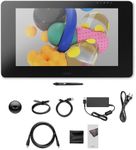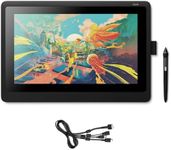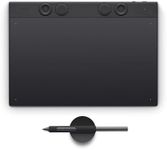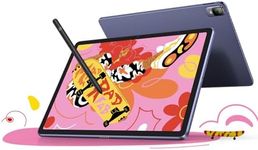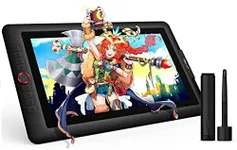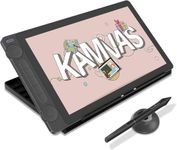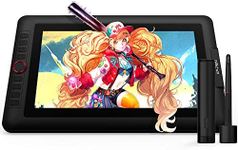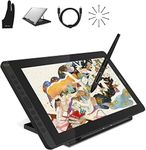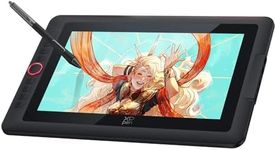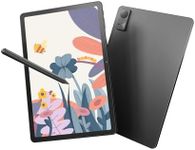Buying Guide for the Best Drawing Tablets
Choosing the right drawing tablet can significantly enhance your digital art experience. The key is to find a tablet that matches your artistic style, workflow, and comfort level. Consider what you will primarily use the tablet for, whether it's sketching, detailed illustrations, or graphic design. Also, think about where you'll be using it most often—at home, in a studio, or on the go. Understanding these factors will help you prioritize the features that matter most to you.Screen SizeScreen size refers to the diagonal measurement of the tablet's display area. It's important because it affects how much space you have to work on and how portable the device is. Smaller screens, typically under 10 inches, are more portable and suitable for quick sketches or on-the-go work. Medium screens, around 10 to 16 inches, offer a balance between portability and workspace, ideal for most artists. Larger screens, over 16 inches, provide ample space for detailed work but are less portable. Choose a size that fits your workspace and how you plan to use the tablet.
ResolutionResolution is the number of pixels displayed on the screen, affecting the clarity and detail of your work. Higher resolution means more detail and sharper images, which is crucial for detailed illustrations and professional work. Resolutions are often measured in lines per inch (LPI) or pixels per inch (PPI). For casual use or beginners, a lower resolution might suffice, but for professional artists, a higher resolution is recommended to ensure precision and clarity in your artwork.
Pressure SensitivityPressure sensitivity refers to how many levels of pressure the tablet can detect from the stylus. This is important because it affects how your strokes appear on the screen, allowing for variations in line thickness and opacity. Tablets with higher pressure sensitivity, typically over 2000 levels, offer more control and are better for detailed work. Beginners might be comfortable with lower sensitivity, but as you advance, higher sensitivity can provide a more natural drawing experience.
Stylus TypeThe stylus is the pen-like tool used to draw on the tablet. There are different types, including battery-free, rechargeable, and those with additional features like tilt sensitivity. A battery-free stylus is convenient as it doesn't require charging, while a rechargeable one might offer more features. Tilt sensitivity allows for more natural shading and drawing angles. Consider what feels comfortable in your hand and what features you need for your art style.
ConnectivityConnectivity refers to how the tablet connects to your computer or device. Options include USB, Bluetooth, or wireless connections. USB connections are reliable and fast, suitable for stationary setups. Bluetooth or wireless options offer more flexibility and portability, allowing you to move around without being tethered to a device. Choose based on your workspace setup and whether you need the freedom to move around while working.
Operating System CompatibilityOperating system compatibility ensures that the tablet will work with your computer or device's operating system, such as Windows, macOS, or Android. It's crucial to check this to avoid compatibility issues. Most tablets support multiple operating systems, but it's always good to verify. Consider what devices you plan to use the tablet with and ensure compatibility for a seamless experience.

